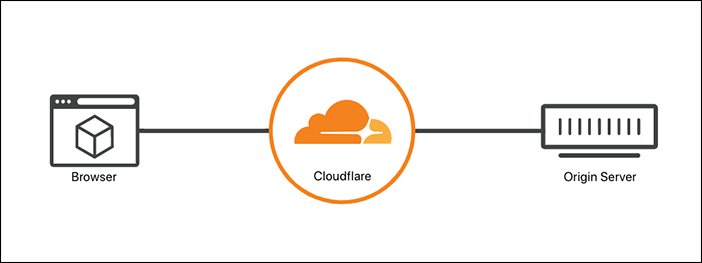Encryption modes
The modes listed below control the scheme (http:// or https://) that Cloudflare uses to connect to your origin web server and how SSL certificates presented by your origin will be validated.
If possible, Cloudflare strongly recommends using Full or Full (strict) modes to prevent malicious connections to your origin.
For more details about how your encryption mode fits into the bigger picture of SSL/TLS protection, refer to Get started .
Update your encryption mode
To change your encryption mode:
- Log into the Cloudflare dashboard and select your account and application.
- Navigate to SSL/TLS.
- Choose a new encryption mode.
Off
Setting your encryption mode to Off (not recommended) redirects any HTTPS request to plaintext HTTP.
Use when
Cloudflare does not recommend setting your encryption mode to Off.
Required setup
There is no required set up for this option.
Limitations
When you set your encryption mode to Off, your application:
- Leaves your visitors and your application vulnerable to attacks.
- Will be marked as “not secure” by Chrome and other browsers, reducing visitor trust.
- Will be penalized in SEO rankings.

Flexible
Setting your encryption mode to Flexible makes your site partially secure. Cloudflare allows HTTPS connections between your visitor and Cloudflare, but all connections between Cloudflare and your origin are made through HTTP. As a result, an SSL certificate is not required on your origin.
Use when
Choose this option when you cannot set up an SSL certificate on your origin or your origin does not support SSL/TLS.
Required setup
Depending on your origin configuration, you may have to adjust settings to avoid Mixed Content errors or redirect loops.
Limitations
If your application contains sensitive information (personalized data, user login), use Full or Full (Strict) modes instead.

Full
When you set your encryption mode to Full, Cloudflare allows HTTPS connections between your visitor and Cloudflare and makes connections to the origin using the scheme requested by the visitor. If your visitor uses http, then Cloudflare connects to the origin using plaintext HTTP and vice versa.
Use when
Choose Full mode when your origin can support an SSL certification, but — for various reasons — it cannot support a valid, publicly trusted certificate.
Required setup
Before enabling Full mode, make sure your origin allows HTTPS connections on port 443 and presents a certificate (self-signed, Cloudflare Origin CA , or purchased from a Certificate Authority). Otherwise, your visitors may experience a 525 error.
Depending on your origin configuration, you may have to adjust settings to avoid Mixed Content errors or redirect loops.
Limitations
The certificate presented by the origin will not be validated in any way. It can be expired, self-signed, or not even have a matching CN/SAN entry for the hostname requested.
Without using Full (strict) , a malicious party could technically hijack the connection and present their own certificate.

Full (strict)
When you set your encryption mode to Full (strict), Cloudflare does everything in Full mode but also enforces more stringent requirements for origin certificates.
Use when
For the best security, choose Full (strict) mode whenever possible (unless you are an Enterprise customer ).
Your origin needs to be able to support an SSL certificate that is:
- Unexpired, meaning the certificate notBeforeDate < now() < notAfterDate.
- Issued by a publicly trusted certificate authority or Cloudflare’s Origin CA .
- Contains a Common Name (CN) or Subject Alternative Name (SAN) that matches the requested or target hostname.
Required setup
Before enabling Full (strict) mode, make sure your origin allows HTTPS connections on port 443 and presents a certificate matching the requirements above. Otherwise, your visitors may experience a 526 error.
Limitations
Depending on your origin configuration, you may have to adjust settings to avoid Mixed Content errors or redirect loops.

Strict (SSL-Only Origin Pull)
This method is only available for Enterprise zones.
Connections to the origin will always be made using SSL/TLS, regardless of the scheme requested by the visitor.
The certificate presented by the origin will be validated the same as with Full (strict) mode .
Use when
You want the most secure configuration available for your origin, you are an Enterprise customer, and you meet the requirements for Full (strict) mode .
Required setup
The setup is the same as Full (strict) mode , but you select Strict (SSL-Only Origin Pull) for your encryption mode.
Limitations
Depending on your origin configuration, you may have to adjust settings to avoid Mixed Content errors or redirect loops.
ERR_SSL_VERSION_OR_CIPHER_MISMATCH
If you are experiencing ERR_SSL_VERSION_OR_CIPHER_MISMATCH errors, refer to this
community thread.